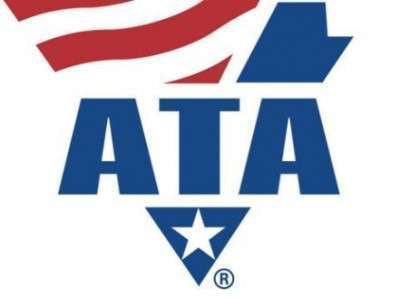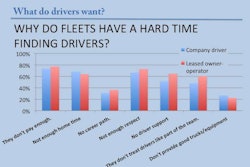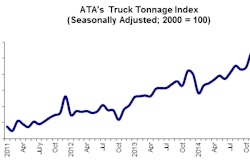Click here to see all of CCJ’s coverage of news from TMC.

In 2013, 69.1 percent of American freight was moved by truck. By 2025, the American Trucking Associations projects that will grow to 71.4 percent, requiring more trucks, more drivers and more companies to move U.S. freight.
“This year is projected to be even stronger than 2014 in terms of tonnage,” said Dave Osiecki, ATA executive vice president, who provided the association’s advocacy update during the Technology & Maintenance Council’s 2014 Annual Meeting in Nashville, Tenn. In 2014, ATA said for-hire truck tonnage increased 3.5 percent compared to 2013.
Although the trucking industry is currently enjoying favorable freight conditions, Osiecki reviewed a number of past and current items on its advocacy agenda to help preserve the industry’s efficiency and productivity.
After successfully working for a one-year suspension of the hours-of-service restart, Osiecki said ATA now is working toward a permanent fix. “Those unnecessary restrictions on fleets and drivers was creating safety risks and pushing more traffic onto the road in the morning hours,” said Osiecki.
ATA is also continuing work in 2015 to promote an increase in the fuel tax as a means to supporting the Highway Trust Fund. “[The Highway Trust Fund] has worked tremendously well for our industry and our country,” said Osiecki. “We think it can continue to work well going forward but we have to find a funding mechanism that is long-term, sustainable. We are fighting an uphill battle, but we are going to continue to promote and increase in the fuel tax and other user fees as long as it is spread out among all highway users, not just the trucking industry.”
Also on ATA’s advocacy agenda is a new freight strategic plan that the U.S. Department of Transportation was tasked with creating as part of the MAP 21 legislation.
“The plan that DOT is working on is somewhat meaningless unless there is funding behind it,” cautioned Osiecki. “We know the freight bottlenecks in this country and we want the freight program to focus highway dollars on those freight bottlenecks to keep our trucks moving and move freight in this country.”
ATA is also looking to address the driver shortage by pushing to lower the driving age for commercial drivers as part of the highway bill. “We all know the 18- to 21-year-old period is a time where we lose kids coming out of high school that don’t go to college but go to trade schools and into construction and other competing industries,” said Osiecki. “Not every 18- or 19-year old should be behind the wheel of a truck, and we get that. We believe there is a way to lower the age conditionally as long as we have good training, oversight and monitoring of those folks.”
On the regulatory front, ATA is also working closely with the U.S. Environmental Protection Agency and National Highway Traffic Safety Administration on phase II of the greenhouse gas and fuel economy standards. While OEMs, engine makers and suppliers were able to meet phase I largely with existing technologies, phase II requirements will require new technologies.
“We are working with EPA and NHTSA to help shape this rule so the industry can live with it going forward,” said Osiecki. “What we don’t want to see out of this is a technology-forcing standard for the engine given the changes we’ve already seen in 2002, 2004, 2007, 2010.”
ATA is also continuing work to see that the pending electronic logging device mandate on track; the Federal Motor Carrier Safety Administration just delayed its expected final rule publication date from September to November of this year.
Osiecki expressed the association’s concerns with the agency’s upcoming Safety Fitness Determination rulemaking as the final piece of its Compliance Safety Accountability program. “[A SFD rule] is not something we want to see happen fast because we think there are too many problems within the CSA program right now to wrap a rule around it that potentially affects the ability of carriers to operate.”
ATA will also continue its pursuit for FMCSA to publish a speed limiter rule. “Seventy percent of the trucking industry currently governs their trucks,” said Osiecki. “We want to require the use of a speed limiter against some top speed. I think we’ll see a proposed rule this year.”











